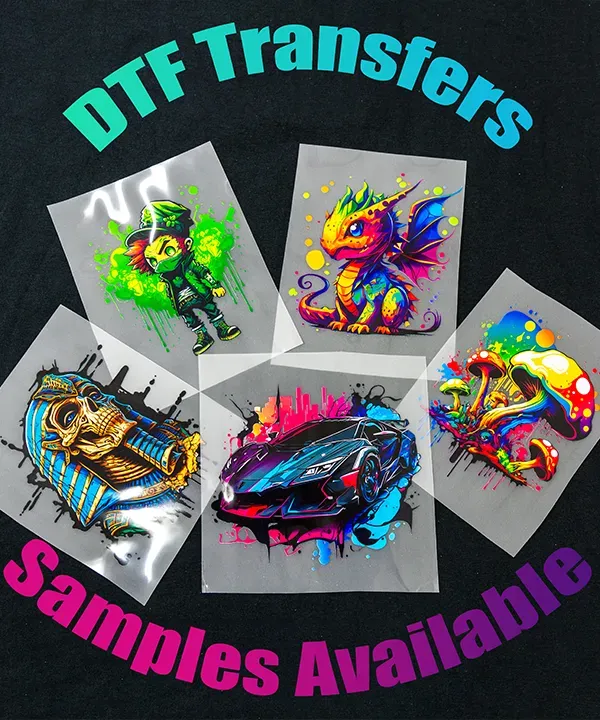DTF transfers, or Direct-to-Film transfers, represent a groundbreaking technology in the world of textile printing, allowing designers to create vivid and intricate patterns effortlessly. This innovative method utilizes a specialized film and adhesive to produce high-quality prints on a variety of fabrics, making it perfect for apparel decorators and graphic designers alike. In this guide, we’ll delve into essential DTF printing tips, ensuring that you master the DTF transfer process while achieving stunning results. We’ll also discuss crucial elements like heat press settings and how they impact the quality of DTF prints. Prepare to elevate your printing skills as we explore the top strategies for getting the most out of DTF technology and creating lasting designs that captivate your audience.
Known alternatively as Direct-to-Film printing, this method has swiftly become a favorite among printing professionals looking to achieve high-quality results without the cumbersome setup of traditional techniques. By applying a transfer process that involves bonding adhesive powder to printed designs on film, users can easily achieve remarkable detail and vibrancy in their prints. As we navigate the essentials of DTF printing, you’ll learn about various settings, tools, and resources that can help optimize your prints and streamline your workflow. Commonly referred to as DTF transfer technology, this approach provides flexibility and durability, making it an ideal solution for various fabric types. Join us as we uncover industry insights and best practices that can elevate your DTF printing game.
Introduction to DTF Transfers
Direct-to-Film (DTF) transfers have revolutionized the world of printing by offering a unique approach to producing high-quality designs without the complexities associated with other methods like Direct-to-Garment (DTG) printing. This technology leverages a special film and adhesive powder to transfer vivid images onto a variety of fabrics, making it an attractive option for graphic designers and apparel decorators alike. The simplicity of this process means that anyone can achieve vibrant results with minimal effort.
One standout feature of DTF is its ability to print complex designs with stunning clarity. By eliminating the need for pre-treatment of fabrics, DTF allows for quicker workflows and enhanced flexibility, especially in custom jobs with intricate details. As graphic design continues to evolve, mastering these transfers can set you apart in today’s competitive marketplace.
Essential Equipment for DTF Printing
Investing in the right equipment is crucial to mastering DTF transfers. A high-resolution DTF printer is paramount, as it ensures that every detail of your design is captured with precision. Popular choices like Epson and Roland are frequently recommended for their ability to produce quality DTF prints that stand out in terms of clarity and detail. Selecting the appropriate transfer film and adhesive powder is equally important; experimenting with different brands can lead to discovering the optimal combination for your specific projects.
In addition to a reliable printer, you need a heat press that delivers consistent temperature and pressure settings. Understanding the recommended settings, such as approximately 305°F (152°C) for 15-20 seconds, will play a significant role in the quality of your final prints. Investing in quality equipment enables a smoother workflow and better results, ultimately enhancing your DTF printing capabilities.
Mastering the DTF Transfer Process
Once your equipment is in place, mastering the DTF transfer process becomes essential. This involves understanding heat press settings, pressure application, and each fabric’s response to heat. A wrong setting can lead to poor adhesion, so testing different combinations is crucial for achieving the desired outcome. A well-optimized process not only saves time but ensures consistency across all prints.
Pre-pressing your fabrics is another key step that significantly impacts the adhesion of your DTF transfers. This ensures that garments are moisture-free and wrinkle-free, allowing for a smoother application. By taking the time to properly prepare your materials, you set the stage for vibrant results that last.
Temperature and Pressure Settings for Optimal DTF Prints
Temperature and pressure are critical factors in achieving the best results with DTF transfers. It is highly recommended to maintain a temperature of around 305°F (152°C) while exerting adequate pressure for roughly 15-20 seconds. However, it’s essential to test these settings based on fabric types and specific conditions as variations can occur. Understanding these nuances allows you to fine-tune your approach and achieve high-quality DTF prints that endure.
Additionally, tracking your experiments with different temperatures and pressure settings can significantly improve your workflow. By keeping a record of what works best for each fabric, you can streamline the process for future projects, ensuring professional-grade results consistently.
Post-Application Care for DTF Transfers
Caring for DTF prints after application is just as important as the printing process itself. Proper post-application care involves allowing your printed items to cure for at least 24 hours before washing. This step helps ensure that the adhesive has fully set, thereby enhancing the longevity of the print.
Further, it’s advisable to educate customers on proper washing techniques. Suggesting cold wash cycles and air drying can significantly prolong the vibrancy and durability of DTF prints. This ongoing education not only protects your work but also fosters trust with your clients by showing that you care about the quality of the products they receive.
Engaging with the DTF Printing Community
The DTF printing community is an invaluable resource for learning and sharing tips. Platforms like YouTube provide a wealth of information through tutorials and advice from experienced professionals. Engaging with this community can introduce you to new techniques and processes that can enhance your own skills in DTF printing.
By participating in forums, online groups, and watching educational videos, you can keep abreast of the latest trends and advancements in DTF technology. As you learn from others’ experiences, you’ll not only improve your mastery of DTF transfers but also develop a network of fellow enthusiasts who can provide support and inspiration.
Frequently Asked Questions
What is the DTF transfer process and how does it work?
The DTF transfer process involves printing a design onto a specialized transfer film using a DTF printer, applying adhesive powder, and then heat pressing the film onto the desired fabric. This innovative method allows for vibrant and detailed prints without the need for fabric pre-treatment.
What are some essential DTF printing tips for beginners?
Beginners should focus on selecting a high-quality DTF printer, using the right transfer film and adhesive powder, and adjusting heat press settings to around 305°F (152°C) for 15-20 seconds. Pre-pressing fabrics and conducting test runs will also enhance quality and results.
How do I optimize heat press settings for quality DTF prints?
To optimize heat press settings for quality DTF prints, apply heat at approximately 305°F (152°C) for 15-20 seconds with firm pressure. However, always test different fabrics as they may react differently, ensuring the best adhesion and print quality.
Do I need to pre-treat fabrics before using DTF transfers?
No, one of the significant advantages of DTF transfers is that fabrics do not require pre-treatment prior to application. This simplifies the process, making DTF an appealing choice for many printing professionals.
How can I ensure the durability of my DTF prints post-application?
To ensure the durability of your DTF prints, allow them to cure for at least 24 hours after application before washing. Additionally, advise users to wash items in cold water and air dry to preserve the vibrancy and longevity of the print.
Where can I find community resources for improving my DTF transfer skills?
Engaging with the DTF printing community online, such as through platforms like YouTube, can provide valuable tips, techniques, and tutorials. Joining forums or groups dedicated to DTF printing helps connect you with fellow enthusiasts and experts.
| Key Point | Description |
|---|---|
| Understanding DTF Technology | DTF printing uses specialized film and adhesive powder without fabric pre-treatment, providing vibrant prints. |
| Key Components | Key elements include a high-resolution DTF printer, quality transfer film, and adhesive powder for strong bonding. |
| Equipment and Supplies | Invest in compatible DTF printers, quality supplies, and a reliable heat press for optimal results. |
| Process Optimization | Adjust heat settings, pre-press fabrics, and conduct test runs for consistent, high-quality prints. |
| Post-Application Care | Allow curing time and provide washing care tips to maintain print vibrancy and longevity. |
| Community Resources | Engage with the DTF community for tips and tutorials to improve skills and techniques. |
Summary
DTF transfers are pivotal for anyone looking to create stunning prints that are both vibrant and durable. This innovative printing method stands out due to its efficiency and quality, making it a popular choice among graphic designers and apparel decorators alike. By mastering the essential components and techniques of DTF printing, practitioners can produce remarkable designs that endure through time. Optimize your printing setup with the right equipment, adhere to best practices in the application process, and prioritize care instructions post-printing. Embrace the wealth of resources available within the DTF community to continuously refine your skills. With these strategies, you’ll not only achieve excellence in DTF transfers but also elevate your printing business to new heights.



